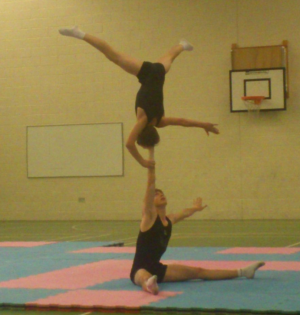Posts Tagged ‘physical literacy’
The Joy of Movement
Jumping for joy; when was the last time you did that? What about Jogging for joy? Hardly sounds the same does it? I recently heard two people talking about their exercise regime. Everything was counted. They count calories, they count steps, they count miles and they count lengths in a pool. Their measure of progress…
Read MoreWhat is Athletic Development?
Athletic Development is a combination of planned, unplanned, organised and chaotic events that lead to a person’s overall physical and mental abilities to perform a variety of physical tasks, often within sport. Long Term Athletic Development (LTAD) is a model that highlights different stages from infancy to adulthood and what types of activities are best…
Read MoreWhy are you still using the plank?
Why are teachers and coaches still using the plank? I have no idea when this exercise was introduced but, much like the Grey Squirrel, it has eliminated its predecessors and become the dominant species. I was coaching my ‘Strength and Co-ordination’ group last night and I asked them if they did the plank at school…
Read MoreWhat is physical literacy?
What is Physical Literacy? Physical Literacy is a term gaining currency to help promote the need for children to be given the opportunities to move. Physical education has been squeezed out of the school curriculum, competitive sports have taken over and many children are disheartened and therefore disengaged. “Partly through lack of sufficient activity, some children…
Read MoreStructural Integrity: Building the Foundation for youth athletes.
How do I start training?
 In the rush to get results fast and take shortcuts, or to “get to the interesting stuff” young athletes get broken.
In the rush to get results fast and take shortcuts, or to “get to the interesting stuff” young athletes get broken.
One thing I have been working on over the last two years is improving the structural integrity of the athlete, before moving onto other areas of fitness.
Structural Integrity is composed of 4 key components:
Read More3 pillars of athletic development: Kelvin Giles
“Great coaches find a way or make one”
Kelvin Giles presenting his “Quest for physical literacy” at the Excelsior Athletic Development Centre on Monday.
The theme was putting precision, variety and progression into the coaching and teaching of young people at every opportunity.
Read MorePrinciples of Athletic Development : GAIN review 1
“Are you making athletes better or tired or more predisposed to injury?”
This was one of the key questions we were asked on the GAIN 2011 conference in Houston, Texas in June.
It is easy to make Athletes tired, it is easy to do STUFF, but making them better and knowing why you are doing things is difficult.
This is the 1st of 5 blogs that will review some of the things covered over the 5 day conference. It is a summation of my reflections and thoughts since then: hence the delay.
Read More




